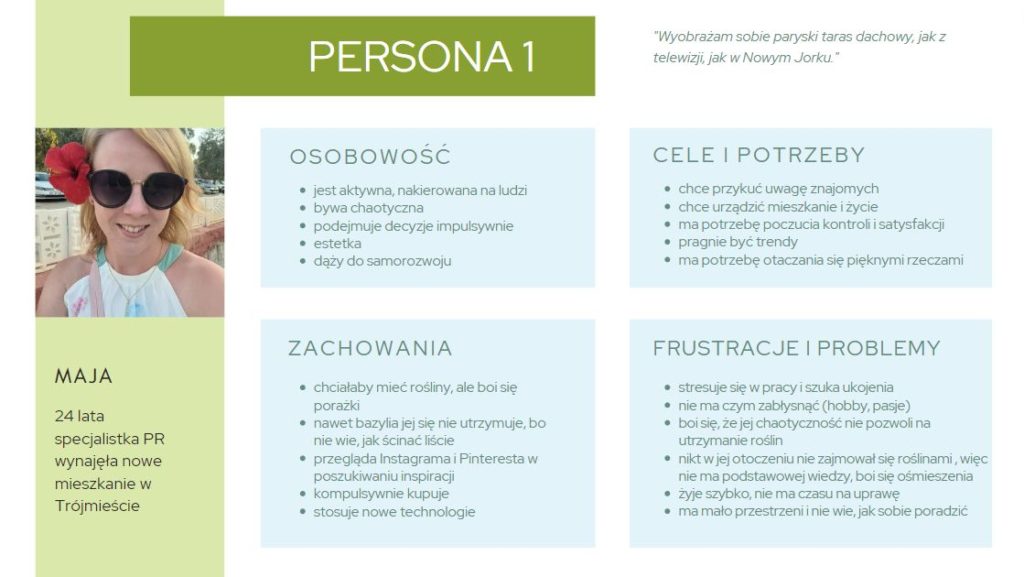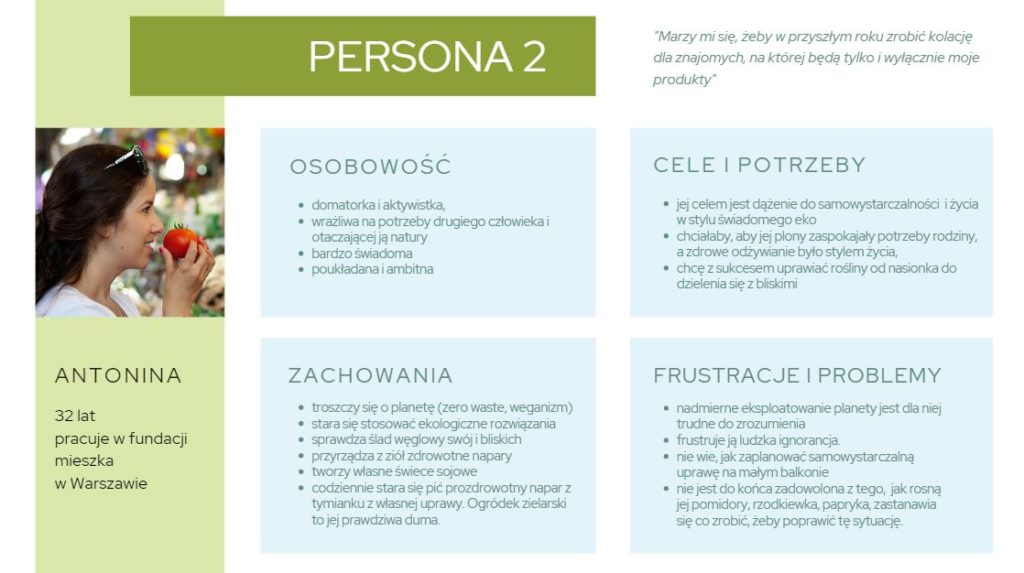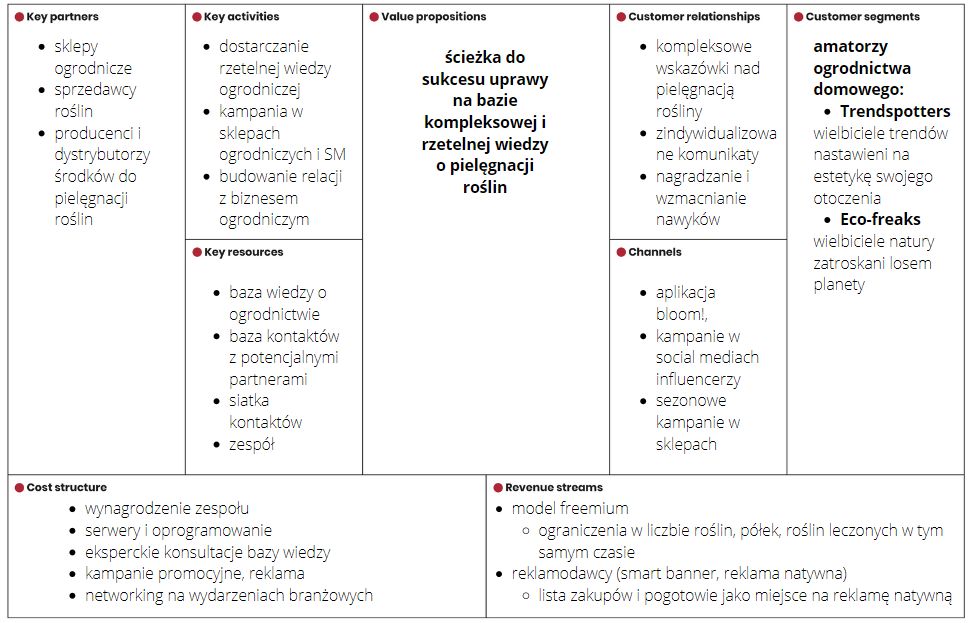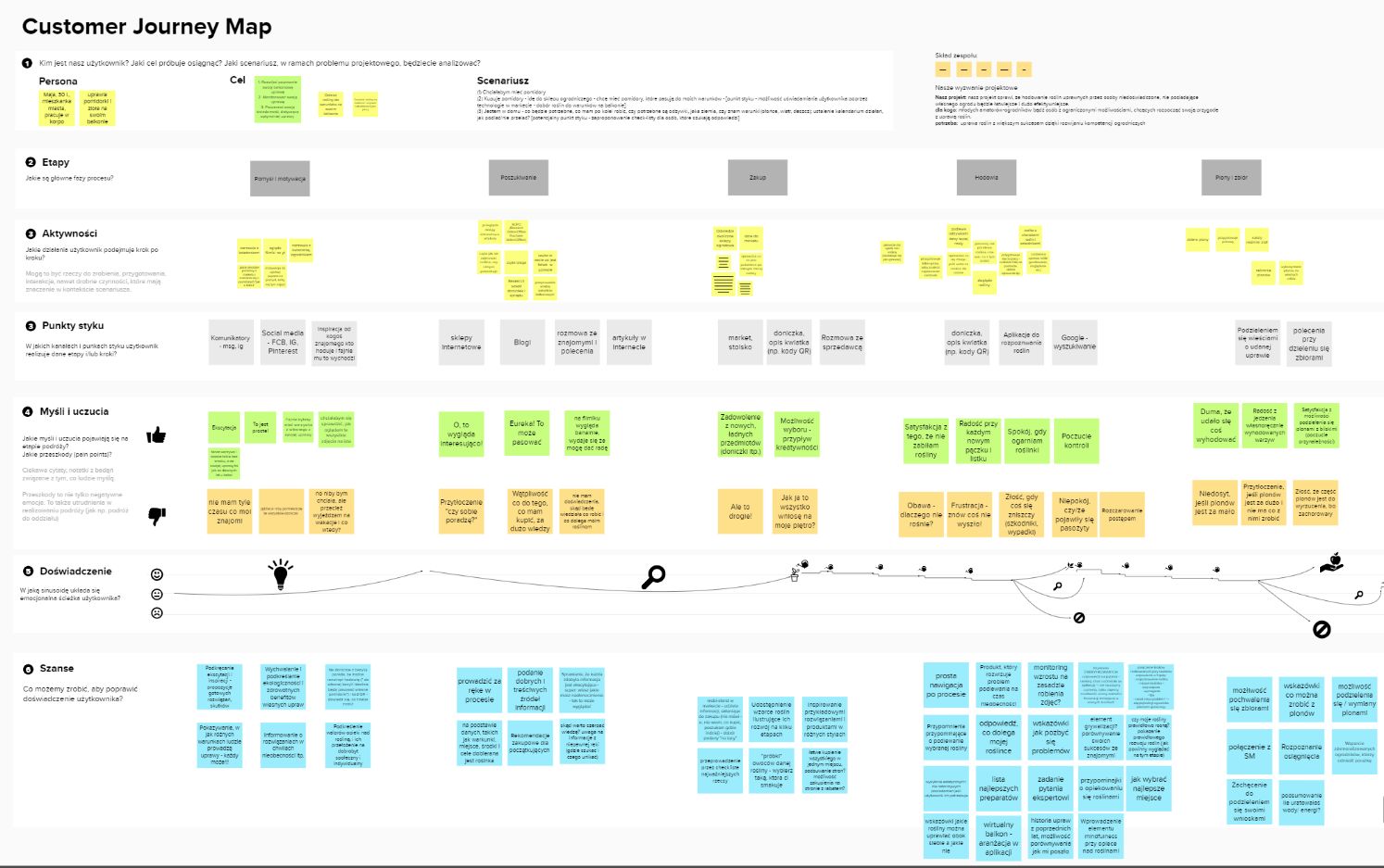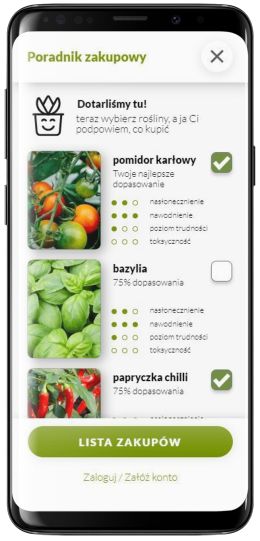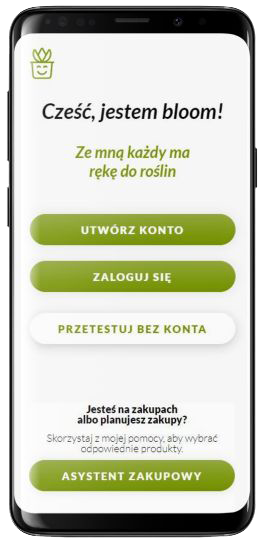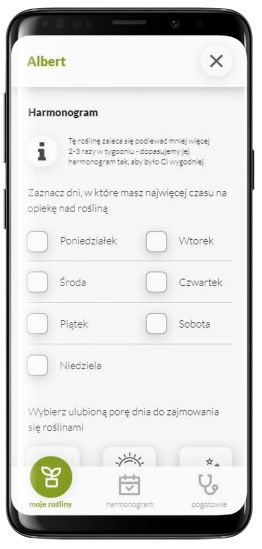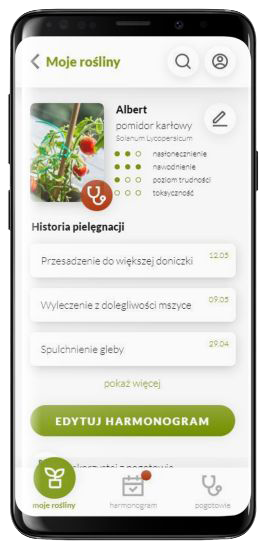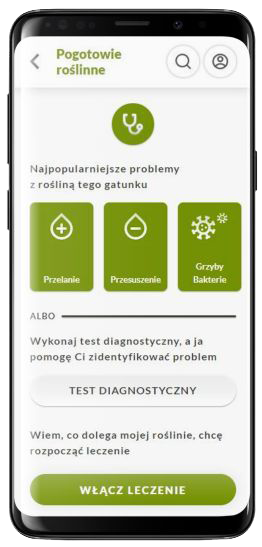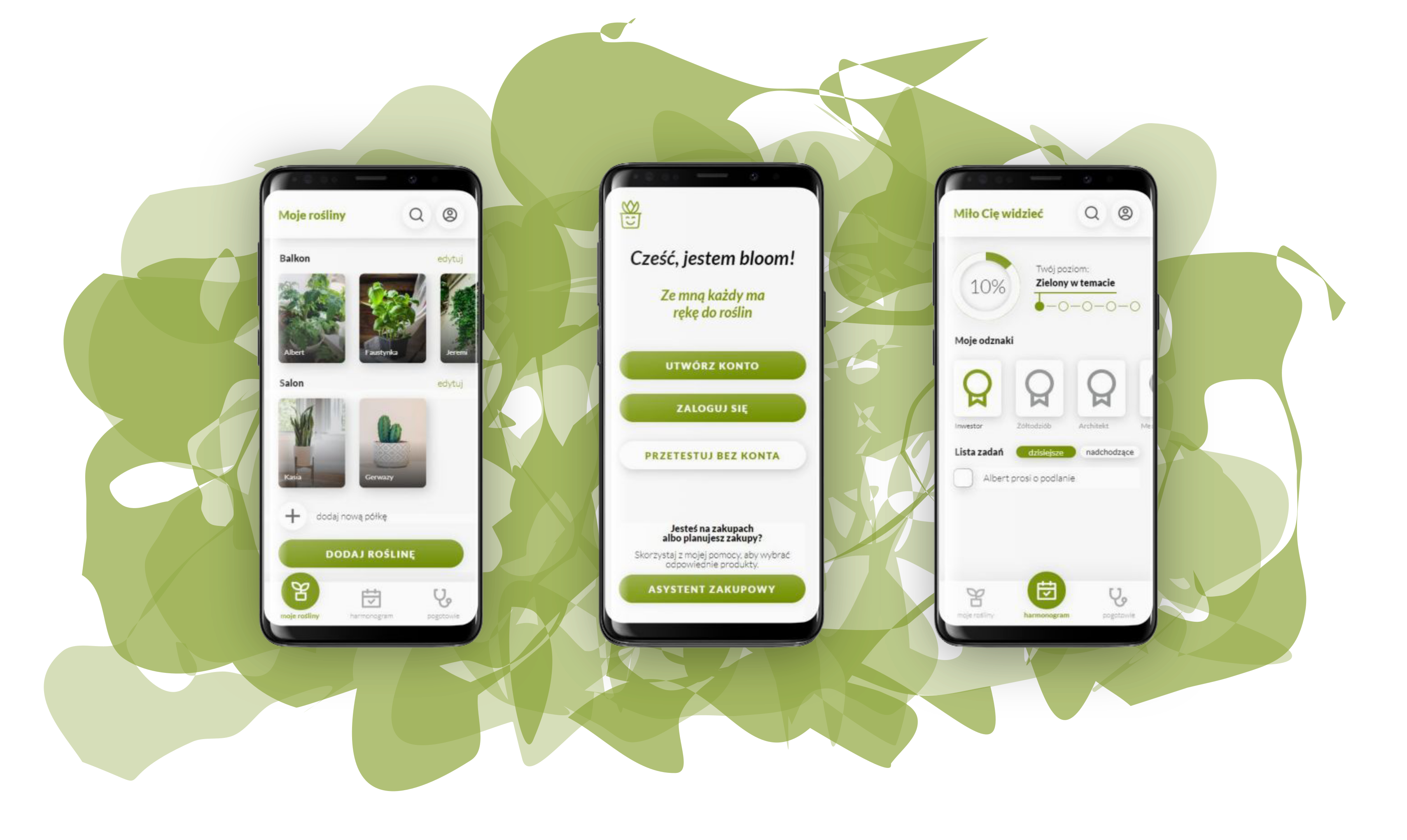
bloom!
project origins
prototype of bloom! app is a student project under UX Design at SWPS in Sopot in 2021/2022
bloom!
team
bloom! is the result of a collaboration between a team of five: Alexander Malinowski, Dorota Pastuszak, Izabela Slomska, Kinga Szulc and Malgorzata Romanowska; the project mentor was Kaja Toczyska
scope
activities
Desk research, needs analysis, product strategy building, modeling: scenarios, diagrams, wireframes, prototyping, usability testing and prototype updating
used
tools
– Axure
– Mural
– Diagrams.net
– Google Forms
– Adobe XD
– Google Meet
project challenge
The goal of the project was to create a tool for amateur gardeners, making it easier and successful for inexperienced people without their own gardens to grow plants.
project stages
The project included needs analysis, strategy building, modeling, prototyping, testing and creation of the final prototype.

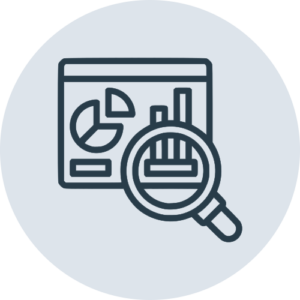
needs analysis
The focus of the research was practitioners’ experiences with urban balcony crops of edible plants. We conducted research in the form of desk research and 11 in-depth interviews.
Objectives of needs analysis:
OBJECTIVE 1 | To learn about the motivations, needs and experiences of amateur gardeners
OBJECTIVE 2 | To learn about the difficulties, concerns and barriers of growing plants on balconies
OBJECTIVE 3 | To learn about sources of knowledge, identifying their strengths and weaknesses
Review of professional literature, scientific and popular science, reports, websites and thematic groups on social media
Recruitment questionnaire, distributed through thematic groups, related to gardening
Individual in-depth interviews and their analysis: aggregation of materials, virtual grid (Mural).
conclusions in a nutshell
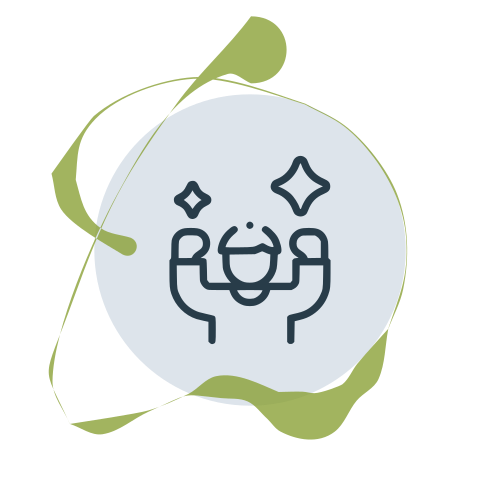
MOTIVATION
our solution should promote confidence and motivate to start growing
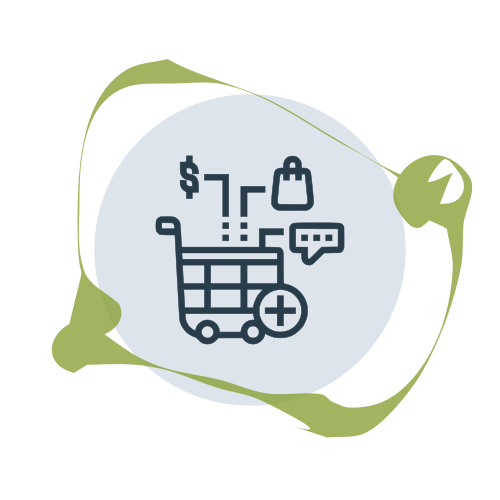
SHOPPING
in order to prevent failure, the product should help right from the purchase decision stage
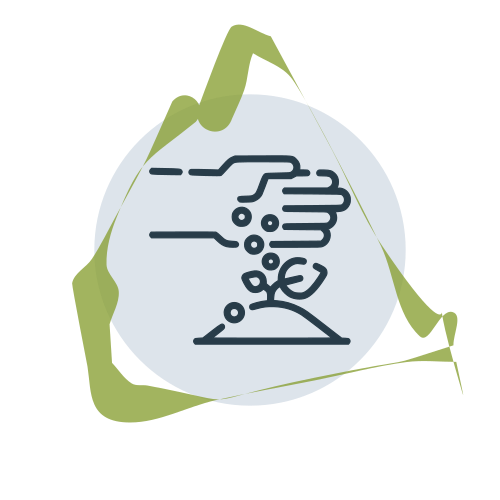
PROFILING
the solution should propose different cultivation scenarios based on the declared conditions and preferences
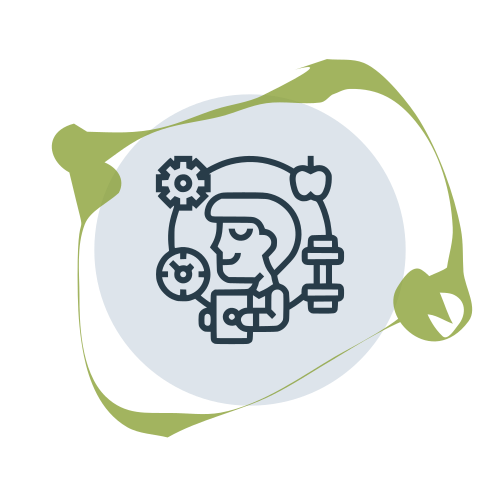
GARDENER TYPES
content should meet the needs of 2 types of gardeners (organized type and intuitive type)
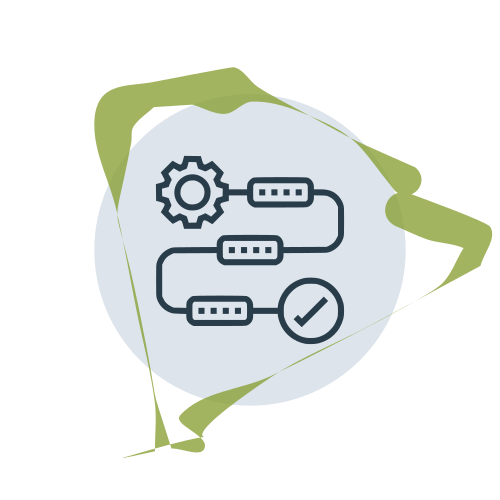
COMPLIANCE
the instructions should cover the cultivation process holistically from the beginning to the end of cultivation
personas
Two personas emerged from the research: trendsetter Maja (the main persona) and eco-freak Antonina.
product strategy
In order to create a product strategy, we defined the target audience, the outreach channels and touch points, the app’s functions, did a competitive analysis and inspiration, defined the business model, barriers to entry, KPIs.
Everyone contributed to this stage, but focused on different topics. The target group and KPIs were defined by Alexander Malinowski, the problems and needs were defined by Kinga Szulc, the touchpoint channels were defined by Dorota Pastuszak, the competitive analysis was done by Izabela Slomska, the business model, entry barriers and product development were done by Malgorzata Romanowska.
rozwój produktu

mvp
WITH BLOOM! EVERYONE HAS A WAY TO PLANT
aim
assisting amateurs in growing plants
target group
first users – amateurs attracted by the vision of success with the support of our new application
partners
cooperation with one chain of garden stores or several individual ones
main functions
– shopping assistant
– care schedule
– gratification/ gamification
– progress monitoring
– treatment mode
– user’s plant catalog
– expert knowledge base
second phase
SHARE WITH OTHERS YOUR WAY TO PLANT
aim
exchange of knowledge on plant growing
target group
amateur gardeners, advanced home gardeners – have knowledge and want to share it
partners
garden stores, private and non-profit entities promoting gardening
main functions
– news
– admin panel for advanced users
– Q&A module
– ask for support
third phase
TOGETHER WE HAVE A WAY TO PLANT
aim
creation and development of a community of gardeners
target group
amateur and advanced gardeners, garden store owners, manufacturers of plant care products
partners
garden stores, private and non-profit entities promoting gardening
main functions
– map of partners
– stationary advice
– online shopping
– family profile
– elements of cooperative games
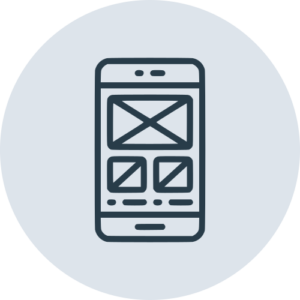
product modeling
The product modeling involved creating usage scenarios, diagrams and lo-fi sketches for 5 functionalities: shopping guide, profile creation and profiling test, schedule and progress monitoring, adding a new plant, virtual plant shelves, plant emergency.
Each team member built one scenario, diagram and lo-fi sketch. Alexander Malinowski was responsible for making the diagrams and sketches consistent.
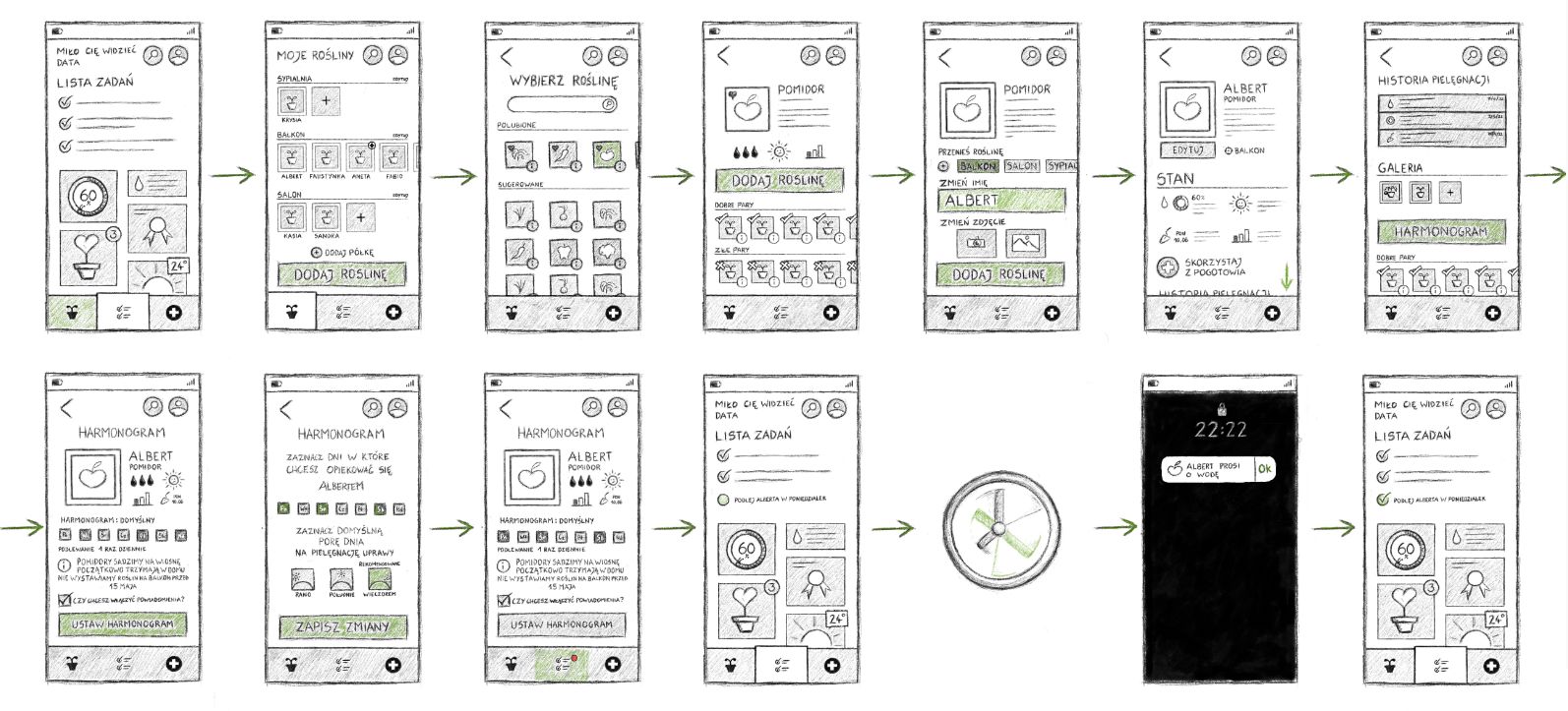
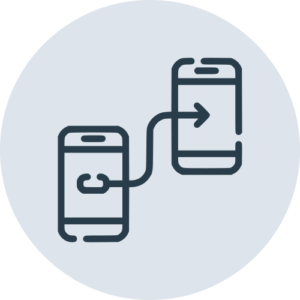
prototyping
The project was created in Axure. Dorota Pastuszak was responsible for the graphic design of the project, defining the look of key components, typography and color palette. Then each person independently prototyped one feature.
The shopping guide was prototyped by Malgorzata Romanowska, account creation and profiling – Izabela Slomska, schedule – Kinga Szulc, virtual shelves – Dorota Pastuszak, plant emergency – Alexander Malinowski. Malgorzata Romanowska, with the support of Izabela Slomska, was responsible for making the prototype consistent.
The prototype shown below is the final version after usability testing.
Users can fill out a profiling test before registering to get a list of plants that match their preferences and get a shopping list based on them.
Users can create an account on the app using Google, pass a profiling test, and set up a plant growing location.
The user can add a new plant to the shelf, set a schedule, accept notifications, and receive a task notification and complete it.
The user can update the data of the plant he has (Albert), add a photo, search good and bad matches, select one of the plants (spinach) and add it to the wish list.
The user can turn on the plant’s treatment by going to the emergency tab, completing the test, choosing a method to fight the disease, and turning on the treatment.
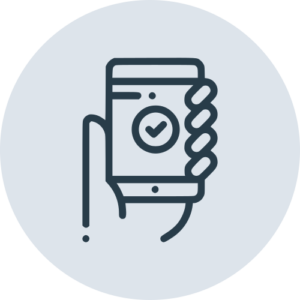
user testing
Test objectives
OBJECTIVE 1 | Verification of the terminology used in the project
OBJECTIVE 2 | Identify difficulties that users encounter when using the application and elements of the application that users do not understand.
OBJECTIVE 3 | Identification of the elements of the application that, from the users’ point of view, are satisfactory and the most relevant.
OBJECTIVE 4 | Identify the weaknesses and strengths of the solutions used in the prototype
OBJECTIVE 5 | Verification whether the application prototype is understandable to users and whether they can realize their needs with it
Survey
We surveyed 10 people: owners of Android smartphones, using mobile apps frequently or very frequently, dissatisfied with the effects of their cultivation over the past 5 years, from cities with a population of more than 50,000, aged 20-45.
The survey was conduced in a hybrid form – some interviews took place online, some in person. The screen shared by the Google Meet app was recorded, and additionally, in the case of live interviews, the behavior of the test subjects.
Each team member interviewed 2 people according to a jointly created scenario, then improved by Malgorzata Romanowska. The grid for analysis was prepared by Dorota Pastuszak, and detailed analysis of the results was carried out by Alexander Malinowski, Kinga Szulc and Izabela Slomska.
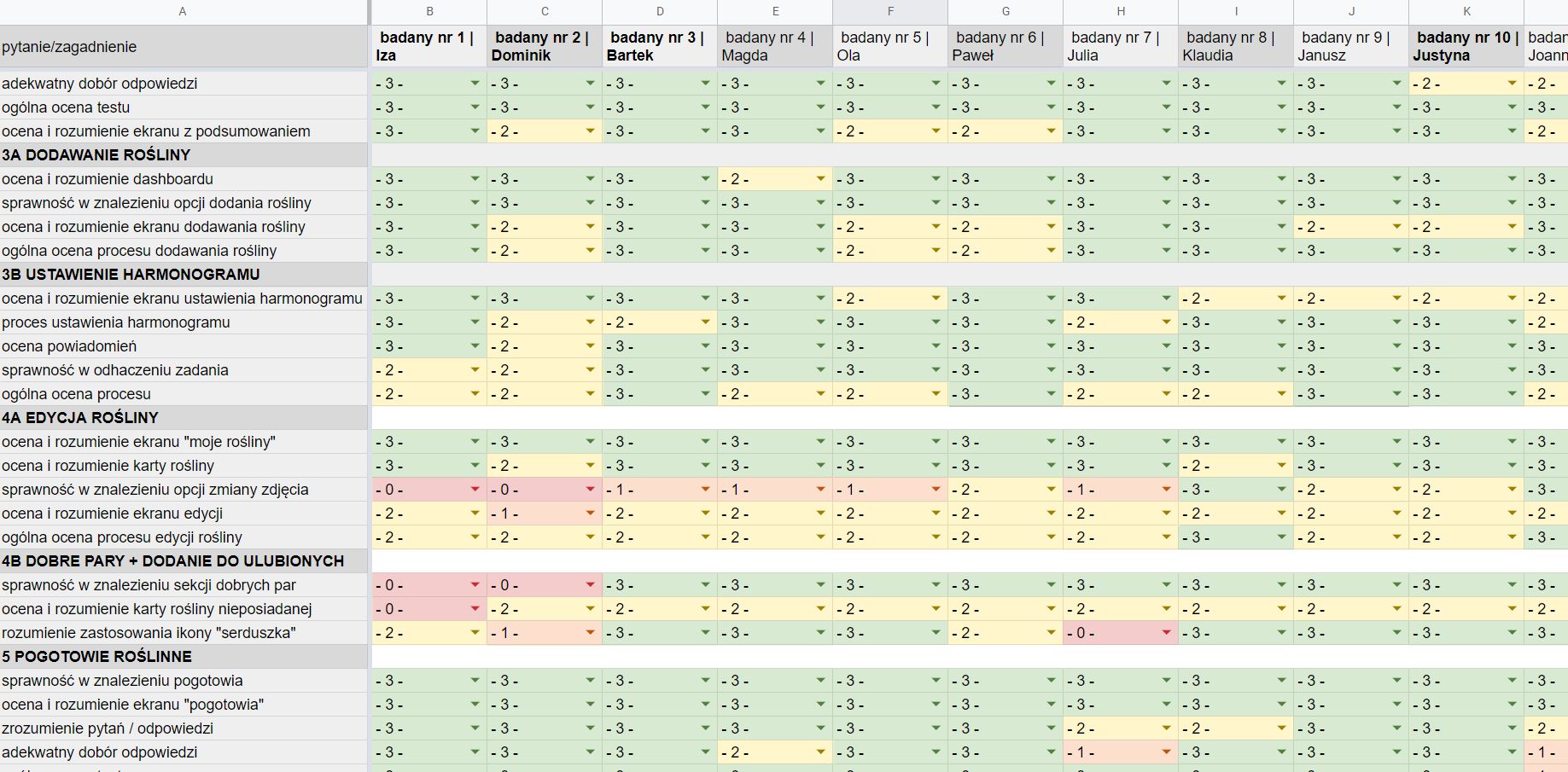
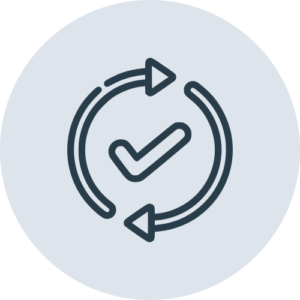
final prototype
We translated recommendations from usability tests into changes in the prototype. The changes were made by Malgorzata Romanowska. In addition, she prepared the prototype for free exploration.

reflections and challenges for the future
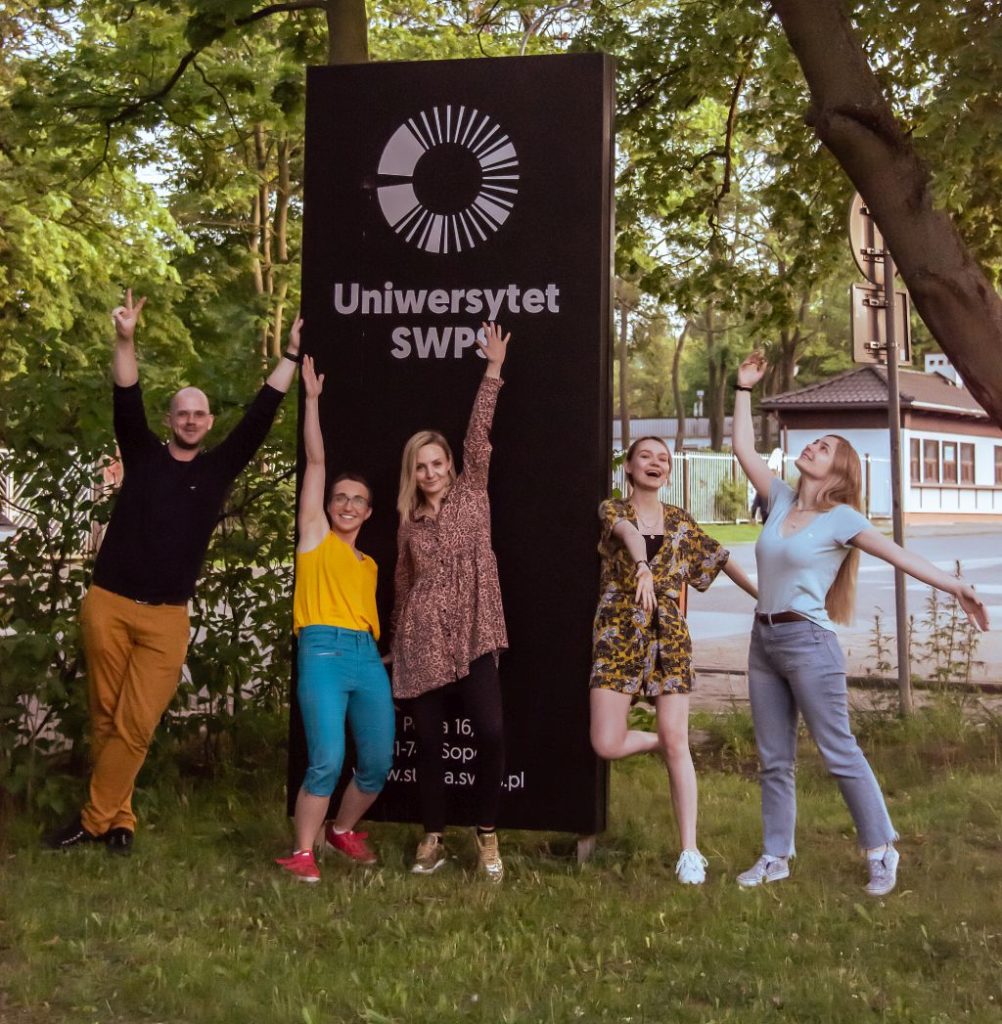
It was a year of intensive work on the project, the results of which were earned by the entire team, under the guidance of experts and mentors. It allowed us to learn all the key stages of UX design.
I appreciated the value of teamwork and members’ contributions. I understood the importance of researching and testing the product, making it answer real needs. I learned about tools, methods and a certain philosophy of thinking about the product.
I look forward to the next challenges, the next teams and projects where I can use the acquired competencies.
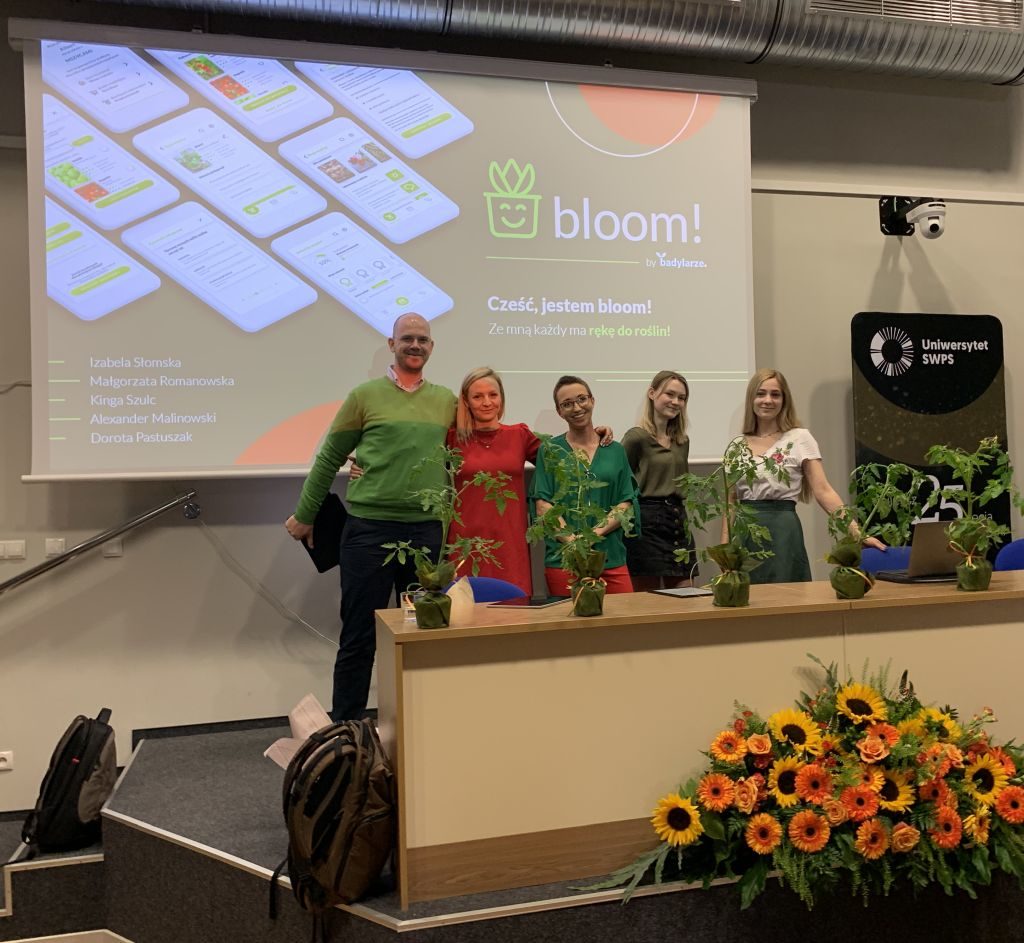
I invite you to learn more about the Greencoin project, where I continue to take on new challenges.
